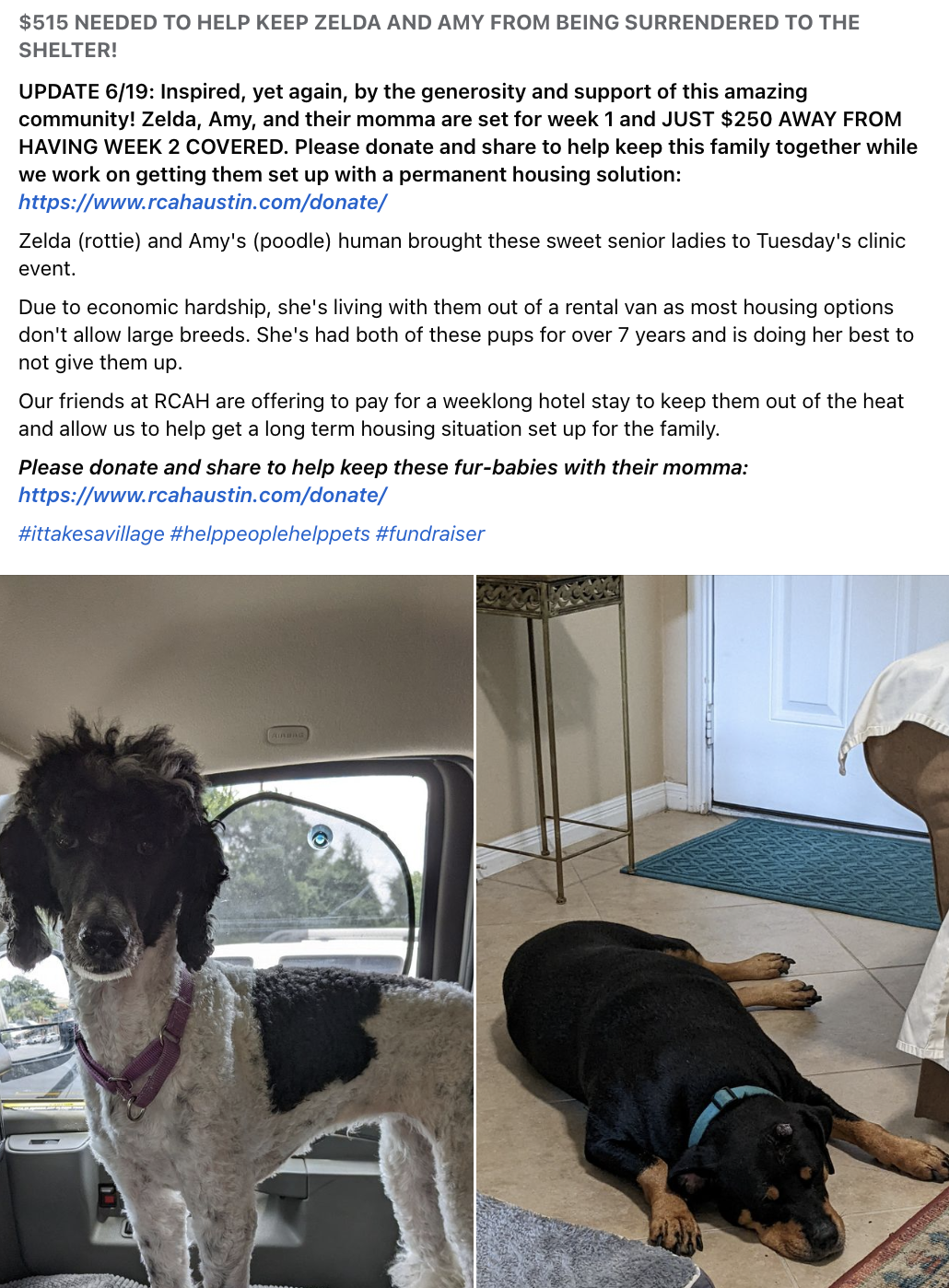How Shelters Can Triage Support for People AND Pets Today
If a person is struggling to care for a pet, they likely need support themselves.
Last month we released a blog highlighting the importance of animal welfare professionals embracing a conversational approach when speaking with individuals who come into the shelter to identify the root causes of WHY pets are walking through the doors. Now, we want to take it a step further–providing coordinated support for people and pets.
While the shelter will always provide a support service to the community, it doesn’t have to be the only option. By keeping the needs of pets AND people as the focus of intake conversations, we can identify support pathways that address each unique situation, help navigate all available solutions, and in many cases, prevent unnecessary intake because we found a more direct solution and keep more families together.
You might be thinking, “That sounds like it’s going to take a lot of time, money, and resources,” but it doesn’t have to! There are plenty of ways to start small.
Identify existing community support programs and services
- Gather known programs and services into one centralized resource list sorted by topic such as housing, healthcare, or crisis sheltering support. These are among the top three instances a person might seek pet support services according to pets.findhelp.com data. Regularly audit and share across teams and with the public. Platforms like pets.findhelp.com are searchable by zip code and support category for people and pets and they are all free or low-cost.
- Create an ecosystem map by combining a centralized resource list and commonly requested support topics during intake conversations. Identify gaps between what is requested and what programs are available and use this information to identify new resources to enhance your referral options and fill the gap.
- Whenever possible, offer support and resources in the most commonly spoken languages of your service area.
Offer direct referrals to existing programs and services
- Create a Positive Alternatives to Shelter Surrender (P.A.S.S.) page to crowdsource support options. See the Austin Pets Alive! P.A.S.S. page here and the accompanying support guide for ideas to get started.
- Establish partnerships with local veterinary practices, human services agencies, and food pantries to identify potential direct referral options to outsource support. Integrate case data tracking to view trends, intake diversion rates, and status of referrals to external partners. See how Dallas Pets Alive! achieved this here using Doobert.com.
- Expand your network by following up with families who have received a resource or program referral. Find out what worked, what didn’t, and what alternative solutions may have helped them even more.


Steal This Idea: At Guilford County Animal Services, a partnership with the Department of Social Services (DSS) resulted in a DSS Case Worker being stationed at the shelter facility to provide human support during pet intake conversations. This allows the shelter staff to do what they do best and support pets while community members can get the human support they need. Build a relationship with your local human services, social services, or health departments, and ask about the potential of a city case worker or social worker being stationed at your shelter facility!
Hire human-centric staff to navigate support programs and services
- Consider hiring individuals with a social work or case management background for community-facing roles like intake. Social workers may bring their expertise in human service topics and their network of support contacts to intake conversations to better support the whole family unit.
- To better address the human element of pet surrender, a dedicated social worker, case worker, or case manager can help navigate the human services options available to people struggling with finances, medical care, housing, mental health, substance abuse, domestic violence, or other complex factors that may be contributing to pet relinquishment.
There are many ways to support your community
Start small, prioritize meaningful conversations to reach the root cause, and build relationships with local programs and services as often as possible to comprehensively address complex situations.
Be on the lookout soon for a brand new HASS toolkit all about navigating support options for people and pets and utilizing human services networks to more comprehensively solve the challenges pet owners face.
Source: Human Animal Support Services












